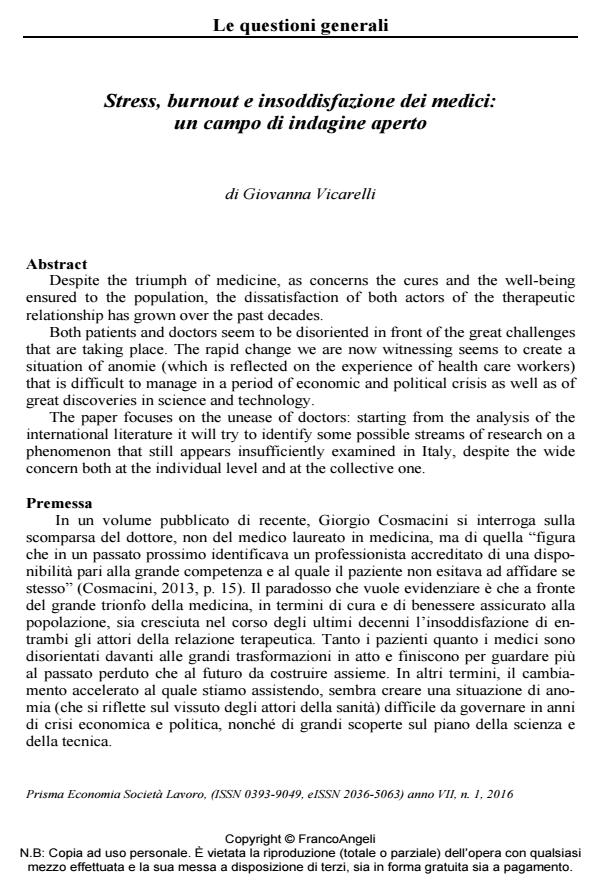Stress, burnout e insoddisfazione dei medici: un campo di indagine aperto
Journal title PRISMA Economia - Società - Lavoro
Author/s Giovanna Vicarelli
Publishing Year 2017 Issue 2016/1
Language Italian Pages 12 P. 9-20 File size 166 KB
DOI 10.3280/PRI2016-001002
DOI is like a bar code for intellectual property: to have more infomation
click here
Below, you can see the article first page
If you want to buy this article in PDF format, you can do it, following the instructions to buy download credits

FrancoAngeli is member of Publishers International Linking Association, Inc (PILA), a not-for-profit association which run the CrossRef service enabling links to and from online scholarly content.
Despite the triumph of medicine, as concerns the cures and the well-being ensured to the population, the dissatisfaction of both actors of the therapeutic relationship has grown over the past decades. Both patients and doctors seem to be disoriented in front of the great challenges that are taking place. The rapid change we are now witnessing seems to create a situation of anomie (which is reflected on the experience of health care workers) that is difficult to manage in a period of economic and political crisis as well as of great discoveries in science and technology. The paper focuses on the unease of doctors: starting from the analysis of the international literature it will try to identify some possible streams of research on a phenomenon that still appears insufficiently examined in Italy, despite the wide concern both at the individual level and at the collective one.
Giovanna Vicarelli, Stress, burnout e insoddisfazione dei medici: un campo di indagine aperto in "PRISMA Economia - Società - Lavoro" 1/2016, pp 9-20, DOI: 10.3280/PRI2016-001002